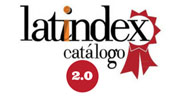Forecasting of daily precipitation occurrence in an altitudinal gradient in southern Ecuador using a weather generator
DOI:
https://doi.org/10.29019/enfoqueute.v9n3.209Keywords:
Forecasting,, Niño 3.4, weather generator, altitudinal gradient, páramoAbstract
Precipitation forecast is fundamental for improving the management of water resources, for development projects and risk reduction. Due to its high variability, high quality rain forecasts are still a challenge. In the present study, a weather generator (WG) was used to study the quality of the forecast of daily rainfall occurrence. The WG was implemented using three variables as predictors: the binary variable precipitation occurrence of the previous day (Kt-1), the maximum and minimum temperatures of the previous day (Txt-1, Tnt-1, respectively); and two co-variables: monthly values of the observed Sea Surface Temperature Anomalies of the Regions 1+2 and 3.4 of El Niño-Southern Oscillation (Niño 1+2 and Niño 3.4 respectively). We found that the variables Kt-1, Tnt-1 and co-variable Niño 3.4 are those that improve the performance of the precipitation occurrence forecasting. There was a noticeable difference in the number of consecutive wet and dry spell days in the altitudinal gradient in a rainy period. We propose several hypotheses based on the use of WG, which allow the understanding of the functioning of the climate system and the improvement of the forecast of precipitation occurrence in a mountainous area.
Downloads
Downloads
Published
Issue
Section
License
The authors retain all copyrights ©.
- The authors retain their trademark and patent rights, as well as rights to any process or procedure described in the article.
- The authors retain the right to share, copy, distribute, perform, and publicly communicate the article published in Enfoque UTE (for example, post it in an institutional repository or publish it in a book), provided that acknowledgment of its initial publication in Enfoque UTE is given.
- The authors retain the right to publish their work at a later date, to use the article or any part of it (for example, a compilation of their work, lecture notes, a thesis, or for a book), provided that they indicate the source of publication (authors of the work, journal, volume, issue, and date).
























